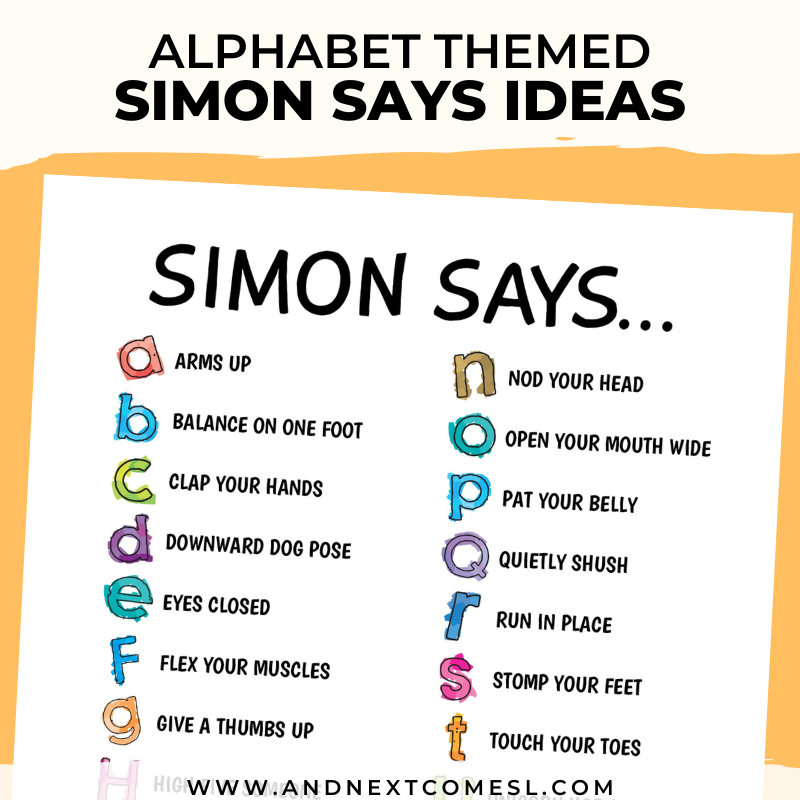
‘Simon Says put your hands on something that rhymes with zelly.’ (Belly) However, fun games like Simon Says may help this process for some.īasically, the person giving the instructions will say something that rhymes. It is not easy, though, and many children find learning to rhyme one of the hardest elements of early literacy. Rhyme is another key skill of early phonics. ‘Simon Says get on the eagle’s back and fly through the trees.’Ĭhildren act all of these things out, always waiting for the instruction where there is no ‘Simon Says.’ 4. ‘Simon Says sneak on your tiptoes through the spooky forest.’

Quite simply, the person giving the instructions this time will describe some kind of exploration or mini-adventure, and the children will act it out. Have some kind of large space for this that the children can move about in safely. This is a great Simon Says game that gets the children moving about a space. Incorporating blending into fun and active listening games like this is a great way of practising the skill in a fun context. In this game, you break up one word of the instruction that you give into sound-talk.įor example, it might sound like this – ‘Simon Says, put your hands on your ch-i-n.’ (Ch-i-n) ‘Simon Says, put your hands on your f-ee-t.’ (Feet!)īlending is possibly the most important skill of early reading, and often the area that most children get stuck on. Simon Says can be used for quite a few different phonics and early literacy skills. That’s where the elements of fun and listening really come in. So, if you say, ‘Make your arms like chicken wings!’ then children don’t do it. Same as with all these games, if you don’t say ‘Simon Says’ then the children don’t do it (you probably knew that!). ‘Simon Says have one arm like a trunk, and the other an elephant ear!’ The instructions in this Simon Says would all link to animals. Let’s imagine you pick animals as a theme. Something like superheroes, or vehicles, or animals would all work really well. It is good if you pick something that the children are interested in.

The idea of this one, as you can probably guess from the title of it, is to pick a theme. You can use them in school, preschool, outer school sports clubs, camps, and pretty much anywhere else if you are looking for fun warm-ups for young children. The best 12 games like Simon Says that I’ll be looking at in this article are:Īll of these are perfect for children between the ages of 3 to about 6. They keep the Simon Says concept fresh, and they incorporate all sorts of new elements and fun skills as well. In ten years of teaching children between the ages of 3-5, I have also tried out a whole host of games that are either a direct variation of Simon Says, or that use the same kinds of elements in the game. Simon Says is a classic game that most children really love, and that is great for teaching the key skill of listening.


 0 kommentar(er)
0 kommentar(er)
